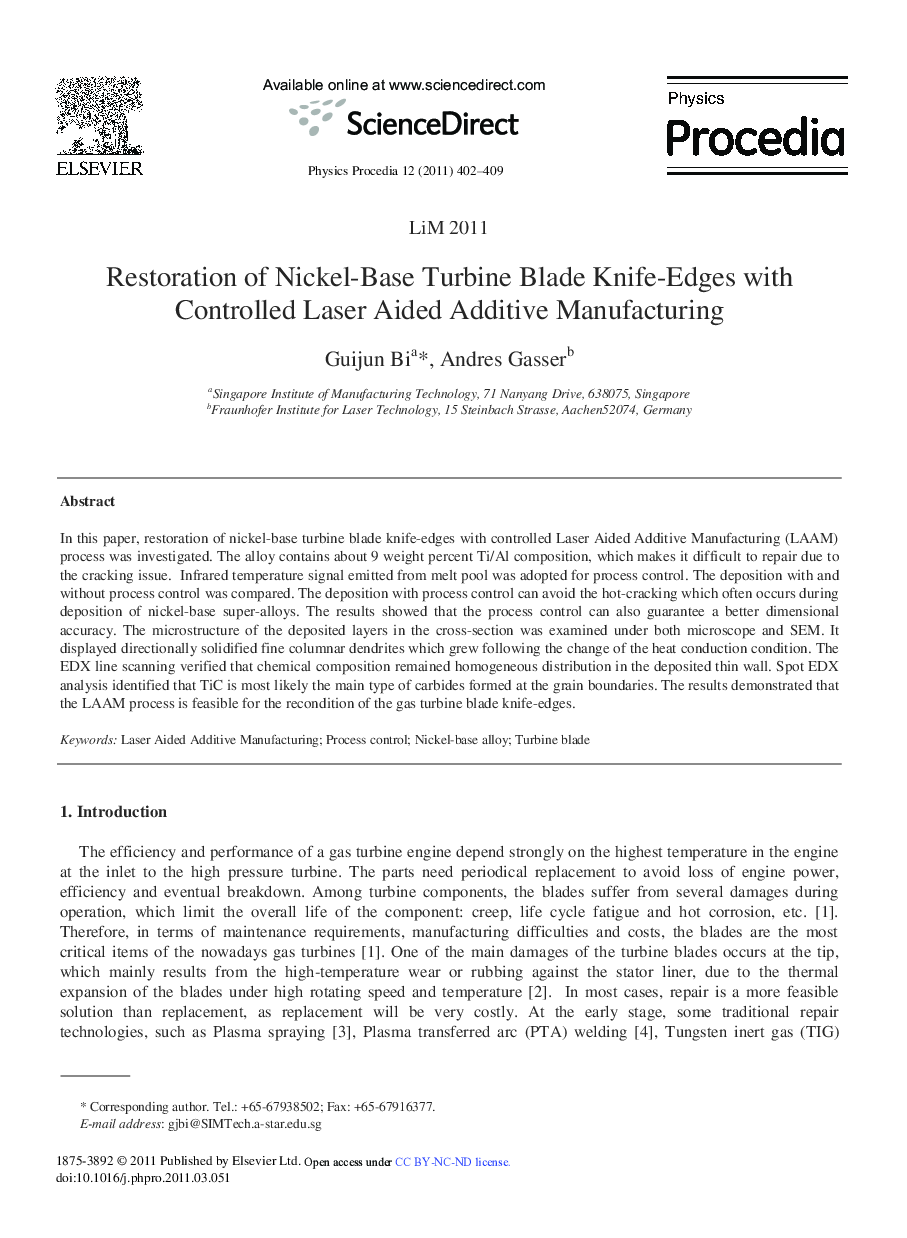| Article ID | Journal | Published Year | Pages | File Type |
|---|---|---|---|---|
| 1873729 | Physics Procedia | 2011 | 8 Pages |
In this paper, restoration of nickel-base turbine blade knife-edges with controlled Laser Aided Additive Manufacturing (LAAM) process was investigated. The alloy contains about 9 weight percent Ti/Al composition, which makes it difficult to repair due to the cracking issue. Infrared temperature signal emitted from melt pool was adopted for process control. The deposition with and without process control was compared. The deposition with process control can avoid the hot-cracking which often occurs during deposition of nickel-base super-alloys. The results showed that the process control can also guarantee a better dimensional accuracy. The microstructure of the deposited layers in the cross-section was examined under both microscope and SEM. It displayed directionally solidified fine columnar dendrites which grew following the change of the heat conduction condition. The EDX line scanning verified that chemical composition remained homogeneous distribution in the deposited thin wall. Spot EDX analysis identified that TiC is most likely the main type of carbides formed at the grain boundaries. The results demonstrated that the LAAM process is feasible for the recondition of the gas turbine blade knife-edges.
